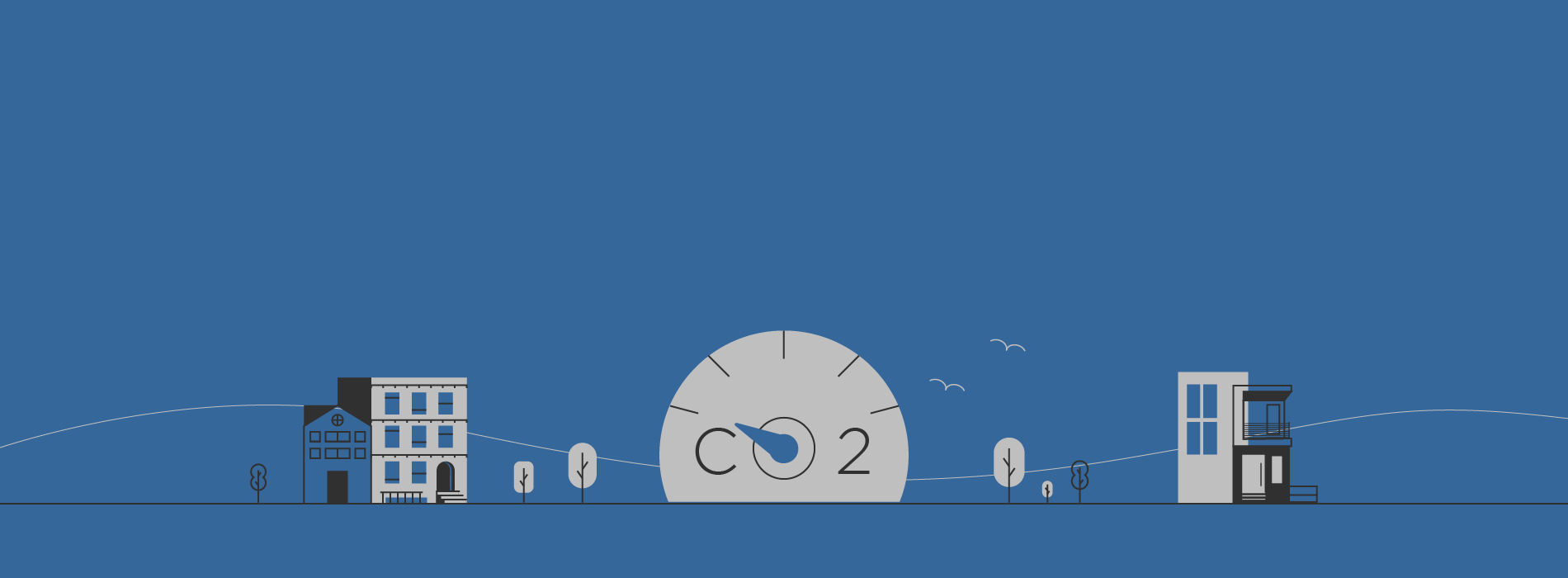Our world is getting warmer, and carbon dioxide (CO2) is to blame. CO2 absorbs and radiates heat, leading to what is called the greenhouse effect — as well as climate change. In 2021, CO2 alone was responsible for about two-thirds of the total heating influence of all human-produced greenhouse gases. The more CO2 we add to the atmosphere, the more we see the greenhouse effect — and the faster we see global temperatures rise.
New building construction releases significant CO2 into the atmosphere, not just through the physical construction of buildings but also material fabrication, transportation, and construction waste. According to the Rocky Mountain Institute (RMI), buildings account for at least 39% of energy-related global carbon emissions annually. At least one-quarter of these emissions come from embodied carbon, or the carbon emissions associated with building materials and construction.
We all want to make more sustainable choices. The problem is that sometimes, especially in construction, we have too many options and not enough information. Determining CO2 emissions for concrete, for example, isn’t a straightforward process: it depends on several variables, from the production process to the location of the fabricator to the amount of ash in the concrete mix. And finding exact calculations for each of these variables can be frustrating, time-consuming, and ultimately might feel like more effort than it’s worth.
With this in mind, Symetri (parent company of Naviate) set out to make a product that would help simplify the process of making more informed sustainability decisions. And thus, Naviate Zero was born.
What is Naviate Zero?
Naviate Zero is a Revit plugin designed to meticulously measure CO2 emissions originating from various building materials. By sourcing data from Environmental Product Declarations (EPDs), this tool empowers architects, designers, and engineers with the knowledge and insight they need to make well-informed choices concerning material selection and overall sustainability.
“Our goal [with Naviate Zero] is ensuring people make informed sustainability decisions," says Jens Kollserud, CEO of Symetri. "To achieve this, they need access to data and tools. Historically, decisions in construction and manufacturing were predominantly influenced by price, time, and availability. We wanted to incorporate CO2 impacts into the decision-making process as well. This brought us to the realization that accessing the right data was crucial.”
“Our primary focus is on designers and users who work within Revit,” says Nicolai Karved, Product Manager at Symetri. “We aim to bridge the gap between professionals whose primary role is sustainability and those who must make design decisions and provide essential data for sustainability assessments. With Naviate Zero, we aim to simplify this workflow and make it easier to make informed decisions.”
How Naviate Zero works
If you’re already using Revit, Naviate Zero will be second nature to you. The program works from right inside the Revit interface, using the tools and dashboards you’re already familiar with.
Here’s how it works.
- Choose an element in your model. This might be a wall, floor, ceiling… whatever you want to work on.
- Naviate Zero will suggest materials based on the element. Search and filter these materials to find exactly what you’re looking for.
- Compare materials based on carbon footprint (red = high carbon footprint, green = low carbon footprint).
- Assign your chosen material to the element. Once assigned, the EPD information will be saved to the element as well.
- When finished, you can see a summary of the total projected CO2 emissions of your model. View and filter by element (walls, for example), floor, or material.
- Export your data just as you would with any other information in your model.
With Naviate Zero, designers can focus on their segment of a building model, while others can extract the entire model for a comprehensive assessment. And unlike many region-specific tools, Naviate Zero caters to multiple regions, thanks to global EPD data from One Click LCA.
“Although there are tools that furnish data for calculations, not many guide the design process by recommending specific EPDs based on various criteria,” says Karved. “This guidance is what makes Naviate Zero unique.”
Conclusion
Naviate Zero is more than just another Revit plugin: it’s a small step in a movement towards a more sustainable future. If you're an architect, engineer, or building designer passionate about sustainable design, it's time to step into the future.




